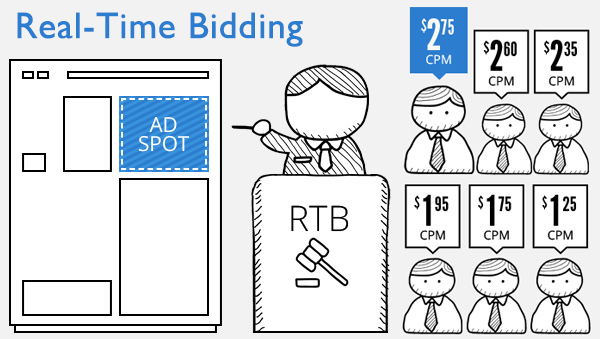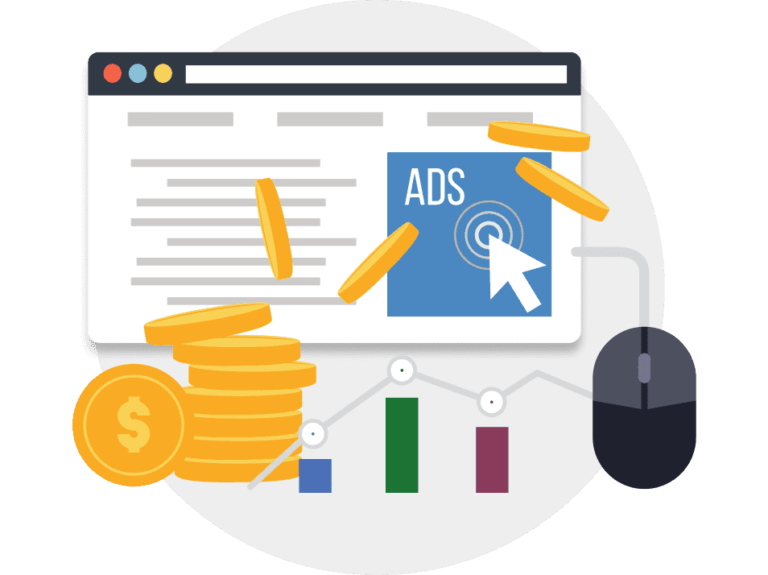The Key to Successful Retargeting Campaigns
Watching website visitors leave your site without taking action can be frustrating. It’s like holding the door open for a customer, only for them to walk out before exploring your offer. But here’s the good news: you don’t have to let those opportunities slip away. With retargeting campaigns, you can re-engage people who’ve shown interest in your brand but didn’t convert.
Retargeting ads work by serving targeted ads to users based on their previous interactions with your website. Whether they browsed your products, added items to their cart, or checked out your services, these ads act as gentle reminders to bring them back. Platforms like Google Ads and social media platforms are excellent for delivering these personalized messages. Not only do they keep your brand top of mind, but they’re also proven to drive higher click-through rates (CTR) and conversions compared to standard display ads.
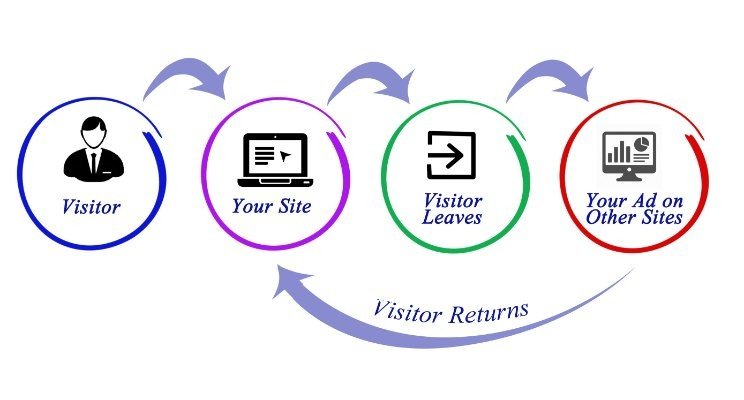
In this guide, we’ll break down how successful retargeting campaigns work and how you can use them to turn missed opportunities into meaningful results.
What Is Retargeting?
Retargeting is a digital marketing strategy that helps reconnect with potential customers who have interacted with your website but didn’t complete a desired action, like making a purchase or signing up for a service. This tactic works by delivering retargeting ads to users as they browse social media platforms, check emails, or visit other websites. These targeted ads are tailored based on their previous activity, ensuring your brand stays top of mind.
For example, if a shopper visits your site, views a product, but doesn’t buy, retargeting ensures they’ll see ads featuring that product later. This reminds them of what caught their eye and encourages them to return and complete their purchase. It’s a simple yet powerful way to turn passive interest into action.
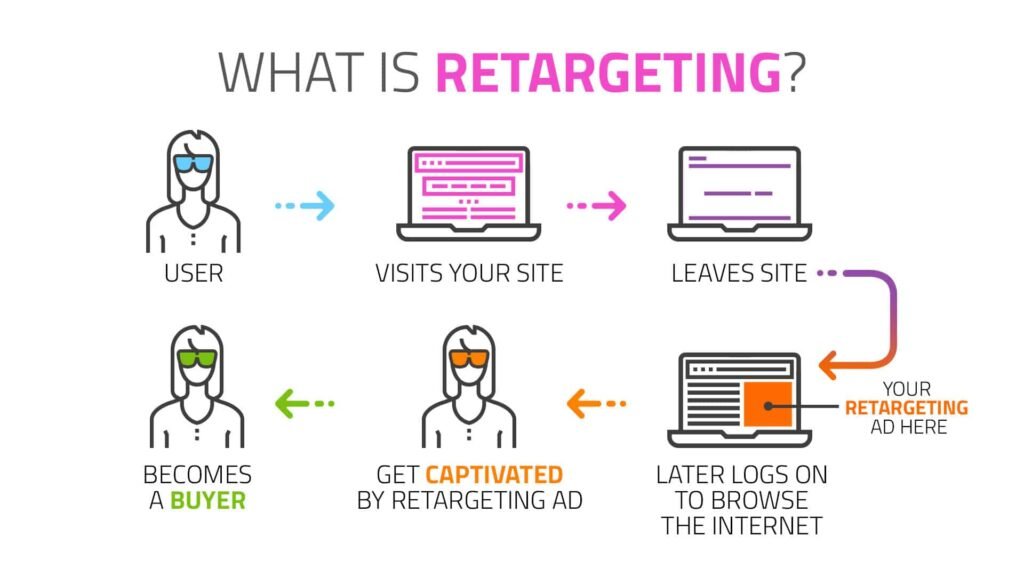
How Retargeting Campaigns Work
Retargeting campaigns rely on tracking user behavior to serve tailored ads that re-engage users. This process is powered by tools like the retargeting pixel, a small piece of code embedded in your website.
Here’s how it works:
- Tracking Website Visitors
When someone visits your website, the retargeting pixel places a cookie in their browser. This cookie records their actions, such as pages they viewed or items they added to their cart. - Building a Retargeting List
The data collected from these cookies is used to create a retargeting list. This list segments your audience based on their interactions, allowing you to deliver targeted ads that match their interests. - Serving Personalized Ads
Once the audience is defined, you can use platforms like Google Ads or Facebook retargeting campaigns to serve ads. These ads are displayed on social media platforms, websites, or even within apps, reminding users of what they left behind. - Re-Engaging Potential Customers
These ads ensure your brand stays visible as users browse online, increasing the likelihood of them returning to complete their action.
Retargeting campaigns are effective because they focus on people who are already familiar with your brand, making them more likely to engage and convert.

Pixel-Based Retargeting
Pixel-based retargeting is one of the most common methods to re-engage users who’ve visited your website but left without converting. It works seamlessly to track and re-engage website visitors based on their online behavior.
Here’s how it works:
- Placing the Retargeting Pixel
A retargeting pixel is a small piece of JavaScript code added to your website. This pixel tracks user actions, such as which pages they visit or which products they view. - Tracking User Behavior
When a visitor browses your site, the pixel places a cookie in their browser. This cookie records their activity, allowing your retargeting platform to know which ads to display later. - Serving Tailored Ads
Using the collected data, you can deliver targeted ads to users on platforms like the Google Display Network or social media platforms. These ads remind them of the specific products or services they viewed, encouraging them to return and take action.
Key Advantages of Pixel-Based Retargeting:
- It’s fast and responsive, allowing you to reconnect with users almost immediately after they leave your site.
- It works without requiring any contact information from users, making it ideal for reaching anonymous website visitors.
Pixel-based retargeting ensures that your ads are relevant and timely, maximizing your chances of re-engaging potential customers.

List-Based Retargeting
While pixel-based retargeting focuses on tracking anonymous website visitors, list-based retargeting takes a more direct approach. This method uses contact information, such as email addresses, to re-engage users with highly personalized targeted ads.
Here’s how it works:
- Gathering Contact Information
When users share their contact details—whether through newsletter signups, account creation, or purchases—you can compile a retargeting list. - Uploading the List to a Retargeting Platform
This list is uploaded to platforms like Google Ads, Facebook, or LinkedIn. These platforms match the contact details with their user databases to identify individuals for your retargeting efforts. - Serving Custom Ads
Unlike pixel-based retargeting, which is based on user behavior, list-based retargeting allows you to craft tailored ads for specific user segments. For example:- Sending reminders to lapsed customers about new deals.
- Promoting exclusive offers to your most engaged audience.
Key Advantages of List-Based Retargeting:
- Allows for ultra-personalized advertising based on users’ preferences and history.
- Re-engages existing customers effectively, making it ideal for loyalty campaigns or upselling.

By combining detailed customer data with strategic ad placement, list-based retargeting helps brands create meaningful connections with their audience, driving higher engagement and conversions.
Setting Up a Retargeting Campaign
- Identify your goals and audience to create successful retargeting campaigns.
- Choose the right marketing channels for your retargeting campaign, such as Google Ads, Facebook, or LinkedIn.
- Set up a retargeting pixel on your website to track user behavior and serve targeted ads.

Identifying Goals and Audience
The success of any retargeting campaign starts with a clear understanding of your objectives and the target audience you want to reach. This step ensures your retargeting ads are precise, relevant, and effective.
1. Define Your Campaign Goals
Ask yourself: What do you want to achieve with this campaign? Common goals include:
- Increasing brand awareness for first-time visitors.
- Encouraging potential customers to complete a purchase.
- Re-engaging existing customers with cross-sells or upsells.
Having specific goals helps you measure the success of your campaign and tailor your ads to achieve those objectives.
2. Segment Your Audience
Not all visitors behave the same way, so dividing your audience into segments is crucial. Use criteria such as:
- User behavior: Which pages they visited or products they viewed.
- Engagement level: How long they stayed on your site or how frequently they visit.
- Demographics: Age, location, and interests.
For example, you can create one segment for users who abandoned their carts and another for users who browsed your homepage but didn’t explore further.
3. Tailor Ads to Each Segment
Once you’ve segmented your audience, design tailored ads for each group. For instance:
- For cart abandoners, use ads offering discounts or free shipping.
- For first-time visitors, focus on ads promoting your brand’s value and bestsellers.
4. Focus on the Right Audience
Use tools like Google Ads or Facebook’s custom audiences to refine your targeting and reach people who are most likely to engage. By focusing on the right users, you maximize your ad spend and improve your ROI.
Choosing Marketing Channels
Selecting the right platforms for your retargeting campaign is key to reaching your target audience effectively. Each platform offers unique opportunities to serve targeted ads and re-engage potential customers.
1. Google Ads
Google Ads is an excellent choice for reaching users across the Google Display Network, YouTube, and through search ads.
- Use display ads to showcase products to users who have visited your site but didn’t convert.
- Run search ads to target users who are actively searching for products or services similar to yours.
- Google Ads allows for precise audience targeting using data from your retargeting pixel or retargeting list.
2. Social Media Platforms
Platforms like Facebook, Instagram, and LinkedIn are ideal for engaging users where they spend most of their online time.
- Facebook retargeting campaigns: Reach users with dynamic product ads or personalized messages based on their activity.
- Instagram ads: Visually appealing ads that highlight your brand and products to users already familiar with your website.
- LinkedIn campaigns: Great for B2B audiences, targeting professionals who’ve interacted with your site.
3. Email Retargeting Campaigns
If you’ve collected user email addresses, you can send personalized email ads to re-engage your audience.
- Use these campaigns to remind users about abandoned carts, promote exclusive offers, or share product updates.
- Emails work well for existing customers or users who have opted into your communications.
4. Combining Platforms for Maximum Impact
A multi-channel approach ensures you reach users at different touchpoints. For example:
- Use Google Ads to follow users across websites.
- Leverage social media retargeting for personalized engagement.
- Supplement with email retargeting campaigns to maintain direct communication.
By choosing the right combination of marketing channels, you can create a retargeting strategy that meets your goals while keeping your brand top of mind.
Creating Effective Retargeting Ads
- Design and launch retargeting ads that resonate with your target audience.
- Customize retargeting ads to match your brand’s voice and style.
- Use compelling copy and strong verbs to prompt action and drive engagement.
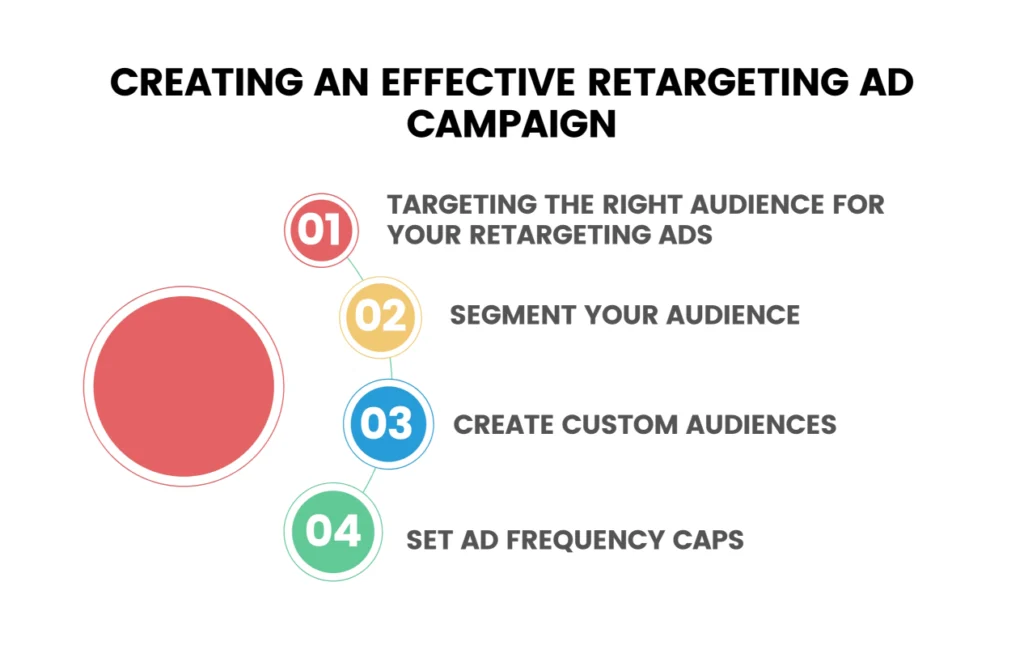
Designing and Launching Ads
The success of a retargeting campaign hinges on well-designed ads that not only grab attention but also encourage action. Once your ads are ready, it’s time to launch and start reaching your target audience.
1. Focus on Visual Engagement
Visually appealing ads are essential for capturing attention, especially on crowded social media platforms and the Google Display Network.
- Use bold, high-quality images that showcase your products or services.
- Incorporate dynamic elements like carousels or videos to make your ads interactive and engaging.
2. Align Ads with User Intent
Your ad messaging should reflect what your audience needs at that moment.
- For potential customers who abandoned their carts, emphasize urgency with messages like, “Don’t miss out—your cart is waiting!”
- For existing customers, promote complementary products or exclusive deals.
3. Personalize Ad Content
Customization is key to effective ads.
- Use dynamic creatives to display products or services users have previously interacted with.
- Incorporate personalization elements, such as the user’s location or browsing history, to make the ad feel more relevant.
4. Launch Your Retargeting Campaign
Once your ads are designed, it’s time to set them live.
- Schedule your ads to run during optimal times when your target audience is most active.
- Use tools like Google Ads or Facebook’s Ad Manager to manage your campaigns effectively.
5. Monitor and Optimize Performance
Launching is only the first step—monitoring your campaign’s performance is just as critical.
- Track key metrics like CTR, conversion rates, and ad spend to evaluate how well your ads are performing.
- Make adjustments as needed, such as tweaking CTAs, updating visuals, or refining your audience targeting.
Customizing Retargeting Ads
Creating a one-size-fits-all ad won’t cut it in a successful retargeting campaign. Customizing retargeting ads ensures that your audience feels personally addressed, increasing the chances of engagement and conversions.
1. Match Ads to User Behavior
Tailor your ad messaging to reflect what your audience has already done.
- If a user browsed a product but didn’t purchase, show that specific product in the ad.
- For visitors who viewed a category but didn’t pick an item, display popular products from that category.
By reflecting their previous actions, you can remind users of what initially piqued their interest.
2. Personalize Ad Creatives
Dynamic ads make personalization effortless. Tools like Google Ads or Facebook allow you to automatically adjust your ad’s content based on each user’s activity.
- Example: A retargeting ad for a user who viewed sneakers might show a carousel featuring similar sneakers, sizes, and price points.
- Include personalized CTAs such as “Your Perfect Fit Awaits” or “Get Your Favorite Sneakers Before They’re Gone.”
3. Maintain Consistent Branding
While personalization is important, your ads should still align with your brand’s identity.
- Use your brand’s colors, fonts, and tone of voice to make the ads instantly recognizable.
- Ensure your ads feel cohesive with the look and feel of your website or landing page.
4. Create Offers for Different Audiences
Customize incentives based on the audience segment.
- For first-time visitors, offer a welcome discount to encourage a purchase.
- For existing customers, promote loyalty rewards or exclusive products.
- This segmentation ensures your retargeting ads remain relevant and valuable to the user.
5. A/B Test Your Ads
Experimentation is key to understanding what works best.
- Test different visuals, CTAs, and headlines to see what resonates most with your audience.
- Use the insights from your tests to refine your ad strategy continuously.
Using Google Ads for Retargeting
Google Ads is a versatile platform for running retargeting campaigns that reconnect with your target audience across the Google Display Network and search results. It offers precise tools to serve targeted ads and re-engage users based on their behavior or interests.
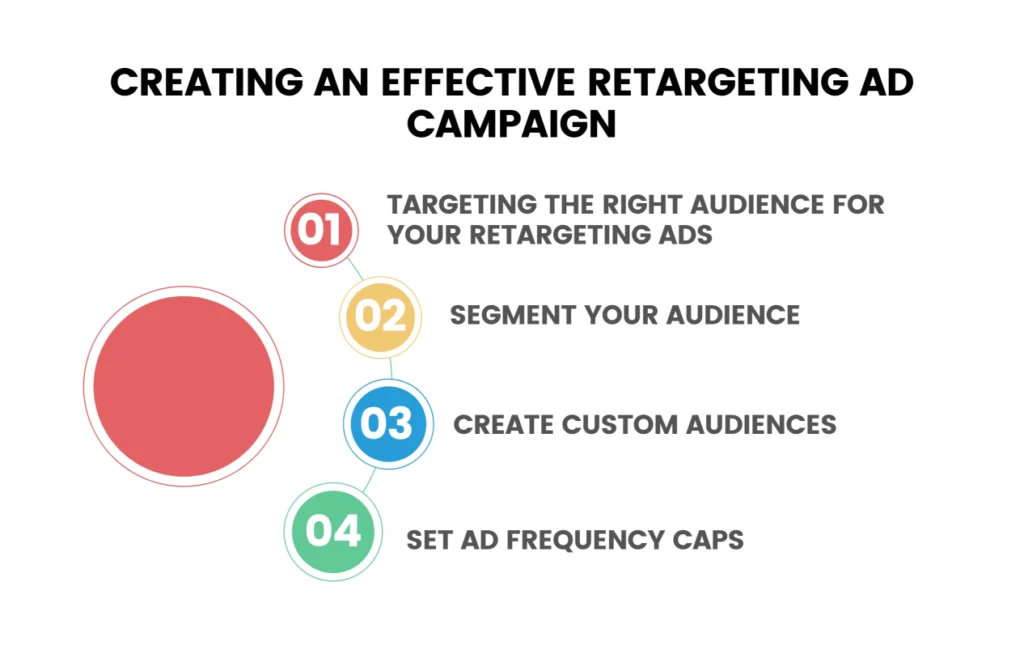
1. Remarket to Website Visitors
Google Ads makes it easy to retarget users who have already visited your website but didn’t convert.
- Place a retargeting pixel on your site to track user activity.
- Create custom audience lists based on actions like viewing specific pages, products, or abandoning carts.
- Serve tailored ads on websites within the Google Display Network, reminding users of what caught their interest.
2. Target Users with Specific Keywords
With Google Ads, you can also target users based on their search behavior.
- Use search ads to appear in front of users searching for keywords related to your products or services.
- For example, if someone searched for “affordable running shoes” but didn’t convert, you can serve an ad featuring your best deals on running shoes.
3. Create Dynamic Ads
Dynamic retargeting ads in Google automatically showcase products or services users interacted with on your site.
- Highlight recently viewed items, pricing, or exclusive offers to make the ad more relevant.
- Dynamic ads are especially effective for ecommerce stores, as they provide a personalized experience.
4. Optimize for Performance
Google Ads provides powerful tools to monitor and improve your campaign’s performance:
- Use the Google Ads Dashboard to track metrics like CTR, impressions, and conversion rates.
- A/B test ad creatives and adjust bidding strategies to maximize ROI.
By leveraging Google Ads, you can re-engage your audience, deliver targeted ads, and drive meaningful conversions. Its robust targeting options and dynamic ad capabilities make it an essential tool for any retargeting strategy.
Measuring and Optimizing Retargeting Campaigns
To ensure your retargeting campaigns are effective, you need to consistently track performance and optimize for better results. By monitoring key metrics and evaluating ROI, you can refine your strategy and maximize returns on your ad spend.

Tracking Progress
Monitoring the performance of your retargeting ads is crucial for understanding what’s working and what isn’t. Here are key metrics to focus on:
- Website clicks: Measure how many users are engaging with your ads by clicking through to your website.
- Reach: Assess the number of unique users who see your ads.
- CTR (Click-Through Rate): Analyze the percentage of people clicking on your ad after seeing it.
- CPC (Cost Per Click): Understand how much you’re paying for each click.
- Total spend: Keep an eye on how much you’re investing in your campaign.
Tools like HubSpot or Google Analytics can help you track these metrics in detail. Additionally, platforms like Facebook’s Ads Manager provide a quick overview of your campaign’s performance, including impressions, clicks, and conversions.
Evaluating ROI
The ultimate goal of any retargeting campaign is to generate a strong return on investment. To evaluate ROI:
- Track conversion rates: Measure how many users who clicked your ads completed the desired action (e.g., purchase, sign-up).
- Calculate revenue generated: Compare the income earned from your campaign to its overall cost.
- Compare multiple campaigns: Identify which ads or audience segments perform best and allocate your budget accordingly.
For example, if a retargeting campaign on Facebook generates a higher CTR and revenue compared to one on the Google Display Network, it might be worth shifting more resources to Facebook.
Optimizing for Better Performance
Once you’ve analyzed your data, focus on optimization to improve outcomes:
- Adjust ad messaging or visuals if CTR is low.
- Refine your target audience to ensure your ads are reaching the right people.
- Implement A/B testing to try different headlines, images, or CTAs and determine what works best.
- Monitor for ad fatigue and rotate creatives to keep users engaged.
Regularly reviewing performance and making data-driven adjustments is the key to maintaining a successful and cost-effective retargeting strategy.
- Use retargeting ad goals to drive conversions and generate awareness.
- Understand the difference between retargeting and remarketing to create effective campaigns.
- Use advanced retargeting strategies such as cookieless retargeting ads to stay ahead of the competition.
Advanced Retargeting Strategies
To maximize the impact of your retargeting campaigns, it’s essential to implement advanced strategies that align with specific goals, leverage innovative techniques, and differentiate between similar marketing methods like retargeting and remarketing.

Retargeting Ad Goals
Clear goals are the foundation of any successful retargeting campaign. Whether you aim to increase conversions or boost brand awareness, your retargeting ads should align with your objectives.
- For driving conversions, use targeted ads that directly address user actions, such as cart abandonment or browsing a specific product category.
- For brand awareness, focus on ads that highlight your unique selling proposition or bestsellers to stay top of mind.
By tailoring your approach, you can efficiently use your ad spend while ensuring your ads resonate with the right audience.
Retargeting vs. Remarketing
Though often used interchangeably, retargeting and remarketing serve distinct purposes:
- Retargeting: Focuses on recapturing the attention of users based on their online behavior, such as website visits or product views. This is done primarily through retargeting ads on platforms like Google Ads or social media platforms.
- Remarketing: Centers around engaging past or inactive customers, often through email campaigns or loyalty programs. It’s more about nurturing relationships than re-engaging recent site visitors.
Understanding the difference allows you to choose the right strategy for your specific goals and audience.
Advanced Strategies to Stay Ahead
- Cookieless Retargeting
With increasing privacy regulations and the decline of third-party cookies, cookieless retargeting is becoming essential.- Leverage first-party data collected directly from your website or CRM.
- Use contextual targeting, which places ads based on the content users are consuming rather than their browsing history.
- Cross-Channel Retargeting
Reach users across multiple platforms to create a seamless experience. For example:- Start with a Google Display Network ad and follow up with a social media retargeting campaign.
- Use email to complement these efforts by offering exclusive deals or updates.
- Dynamic Retargeting
Use dynamic ads to show users exactly what they viewed or left behind.- Example: If a user explored specific shoes on your site, display those shoes with a compelling offer like free shipping or a discount.
- AI and Predictive Targeting
Integrate AI tools to predict user behavior and refine your audience targeting.- Identify potential buyers who are more likely to convert and prioritize them in your retargeting list.
Monitoring and Optimizing Campaign Performance
The success of a retargeting campaign isn’t just about launching ads—it’s about continuously monitoring performance and making data-driven adjustments. Regular analysis and optimization are key to improving outcomes and maximizing ROI.

1. Track Key Performance Indicators (KPIs)
To measure the effectiveness of your retargeting ads, focus on tracking critical metrics like:
- CTR (Click-Through Rate): Indicates how often users click on your ads after seeing them.
- CPA (Cost Per Acquisition): Shows how much it costs to convert a user into a customer.
- Conversion Rate: Tracks the percentage of users who complete the desired action after clicking your ad.
- Ad Spend: Monitors your total investment in the campaign to ensure it aligns with your budget.
2. Analyze Performance Reports Weekly
Regularly review performance data to identify trends and areas for improvement.
- Use tools like the Google Ads Dashboard or Facebook Insights to track metrics in real time.
- Look for patterns, such as which audience segments are engaging the most or which ads have the highest CTR.
- Highlight underperforming ads and adjust their creatives, messaging, or targeting.
3. A/B Test Campaign Elements
A/B testing allows you to experiment with different versions of your ads to see what resonates best with your target audience.
- Test elements such as ad headlines, images, CTAs, or layouts.
- Example: If one CTA says “Buy Now” and another says “Claim Your Deal,” monitor which generates more clicks and conversions.
- Use the results to refine your strategy, doubling down on what works.
4. Leverage Campaign Tracking Tools
Invest in tools that provide detailed insights into your campaign’s performance:
- Google Ads Dashboard: Offers comprehensive data on impressions, clicks, conversions, and costs.
- Facebook Insights: Tracks ad engagement, reach, and audience demographics for social media campaigns.
- CRM Platforms: Tools like HubSpot can tie campaign data back to specific leads, helping you understand the complete customer journey.
5. Real-World Example of Iterative Optimization
Let’s say you’re running a retargeting campaign for an ecommerce store:
- Week 1: You notice a low CTR on an ad targeting cart abandoners.
- Week 2: After A/B testing, you find that a free shipping offer in the headline increases clicks by 20%.
- Week 3: You optimize further by adding a countdown timer to create urgency, boosting conversions by an additional 15%.
Best Practices and Common Mistakes
Even the most well-planned retargeting campaigns can fall short if common pitfalls aren’t avoided. By following these best practices, you can optimize performance, manage your ad spend, and keep your target audience engaged without overwhelming them.
1. Start Small and Know Your Margins
Jumping in with a large budget can lead to wasted resources if your strategy isn’t fine-tuned.
- Begin with a small daily or lifetime budget to test the effectiveness of your campaign.
- Set clear conversion goals, such as cart completions or form submissions, to gauge success.
- Always keep your profit margins in mind to ensure your campaign costs align with the revenue it generates.
2. Avoid Over-Retargeting and Ad Fatigue
Overexposure to retargeting ads can annoy users and lead to diminished returns.
- Use frequency capping to limit how often a user sees the same ad. Showing an ad more than twice to the same user can cause ad fatigue.
- Rotate your ad creatives regularly, mixing up images, copy, and formats to keep your ads fresh and engaging.
- Experiment with different types of targeted ads, such as carousel ads, videos, or dynamic product ads, to maintain interest.
3. Match Landing Pages to Ads
Consistency between your ads and their corresponding landing pages is critical for building trust and driving conversions.
- Ensure the landing page reflects the ad messaging and visuals, so users feel they’re in the right place.
- If your retargeting ad promotes a discount or specific product, the landing page should prominently feature that offer or product.
Conclusion
Retargeting campaigns are a powerful way to re-engage your audience, drive conversions, and maximize your marketing efforts. By understanding your target audience, leveraging tools like Google Ads and social media platforms, and crafting tailored ads, you can turn missed opportunities into meaningful results.
Here’s a quick checklist for success:
- Define your goals and segment your audience.
- Choose the right platforms for your campaigns.
- Create personalized, engaging ads.
- Monitor performance and optimize regularly.
Now it’s time to take action—apply these strategies and watch your retargeting efforts transform your results!
Disclosure: Our blog contains affiliate links to products. We may receive a commission for purchases made through these links. However, this does not impact our reviews and comparisons. We try our best to keep things fair and balanced, in order to help you make the best choice for you.



